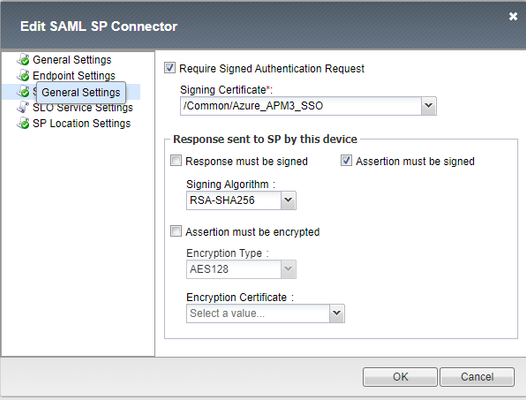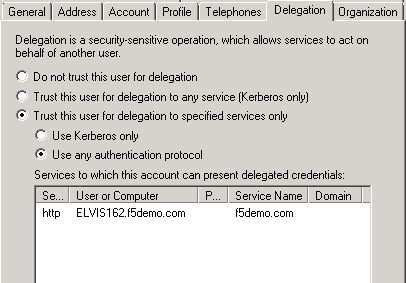SSO
106 TopicsSOLVED: sending IsCompliant, IsKnown and IsManaged via SAML (SSO)
Background We have an EntraID (Azure/Microsoft365) SAML based VPN using the APM module and were keen to provide a different device pool to domain devices, rather than personal devices (BYOD). We noted that, in the EntraID logs, it included elements such as whether the device IsCompliant, IsKnown and/or IsManaged: Wrong step first We followed part of the exceptionally good video from Matthieu Dierick (https://www.youtube.com/watch?v=DBA84d4VJU8) in which he explains how to configure InTune to make the IsCompliant assertion and push a certificate onto the device to identify it.. and then the BIG-IP Edge client will send that certificate back to be used via an API call against InTune (even if EntraID isn't used for your APM authentication). To get the API bit to function we needed to follow the guidance in https://my.f5.com/manage/s/article/K00943512 But we aren't that far down the route with InTune and, without pushing that certificate, we got the error "Device ID was not found in session variables" (as explained in https://my.f5.com/manage/s/article/K93969130 ) To get working: Azure steps It seems exporting these variables isn't natively available through the GUI although there were some pointers available from Azure AD - SAML - Intune - ismanaged attribute - Microsoft Q&A In short, Navigate to: https://portal.azure.com/ Microsoft EntraID Under Manage > App registrations (this will default to "owned application") choose "all applications" tab Filter by the name of your SAML configuration Manage > Manifest Take a copy of the manifest incase you want to revert (note that it won't let you save it unless it can parse the input) Find the section "optional claims" and inject the following after any groups you pass back: "optionalClaims": { "accessToken": [], "idToken": [], "saml2Token": [ { "additionalProperties": [ "on_premise_security_identifier" ], "essential": false, "name": "groups", "source": null }, { "additionalProperties": [ ], "essential": true, "name": "is_device_managed", "source": null }, { "additionalProperties": [ ], "essential": true, "name": "is_device_compliant", "source": null }, { "additionalProperties": [ ], "essential": true, "name": "is_device_known", "source": null } ] }, To get working: APM steps In the visual policy editor you can now assign variables to those claims of the form: session.logon.last.isknown = mcget {session.saml.last.attr.name.http://schemas.microsoft.com/201 4/02/devicecontext/claims/isknown} session.logon.last.iscompliant = mcget {session.saml.last.attr.name.http://schemas.microsoft.com/201 4/09/devicecontext/claims/iscompliant} session.logon.last.ismanaged = mcget {session.saml.last.attr.name.http://schemas.microsoft.com/201 2/01/devicecontext/claims/ismanaged} So you can end up with a variable assignment box that looks like: (just be careful with copy/paste that it doesn't introduce spaces in the session variables) Then you can do a new general purpose > empty box with a branch rule evaluating: expr {[mcget {session.logon.last.ismanaged}] == "true"} Optionally you can record the output of these variables by adding a logging box with the entry: username=%{session.logon.last.username}, ismanaged=%{session.logon.last.ismanaged}, iscompliant=%{session.logon.last.iscompliant}, isknown=%{session.logon.last.isknown}216Views2likes6CommentsF5 APM 2FA through SMTP
Hello, We need to perform 2FA but by using F5 only, we don't have other MFA solutions like Duo, Google Authenticator,.... So can we use F5 to generate token and send it to the user using his email address, (So a token can be generated and by iRule sent to the user email address through SMTP?) Currently, we are using internal DB for users so inside it we can add user's email address Then, F5 APM verifies the token? Please provide your feedback and the configuration required to do that. We know that in VPE there is generate and validate token, so we need to use them, but only with SMTP, directly with F5 Also, it will be great if you can recommend a free or trial for 2FA solutions to be integrated with F5 APM185Views0likes8Commentsclient-initiated SSO issue
I’ve configured client-initiated SSO forms for different web applications, but I'm encountering two issues with two different virtual servers: 1) For the first virtual server, SSO authentication works fine, but the logout link doesn’t function. The APM profile doesn’t accept the URI /names.nsf/?Logout&Form=LogoutDone as a valid logout URI. Is there any workaround for this? 2) For the second virtual server, I don’t see APM submitting the POST request to the backend server. Is it mandatory to include an action field in the backend form? In passthrough mode, the log doesn’t show the "Submit Detection" either.Solved80Views0likes1CommentAPM with EntraID as idP / request signed
Hi experts. I need your help to solve an issue. I'm configuring a new enviroment with BIG-IP version 15.1.8.2 Build 0.0.17 Point Release 2. I have the APM works fine with SSO using EntraID (AzureAD) as idP. Now, I need to enable the request signed (Enforce signed SAML authentication requests - Microsoft Entra ID | Microsoft Learn). I generated the self signed certificate and import it on my app at Azure and my BIG-IP. I changed my config in Access > Federation > SAML Identity Provider and assigned my self signed certificate (pk included) to assign the request. But, I've received the below error by EntraID: Sign-in error code: 76021 Failure reason: The request sent by client is not signed while the application requires signed requests All attemps was made by browser (SSL VPN). Thank you.736Views0likes4CommentsF5 BIG-IP password is hashed during Form based Client Initiated SSO
Hi, I'm having trouble setting up a seemingly simple SSO configuration for a portal. I have an initial logon page with AD authentication and an SSO credential mapping block to expose the user credentials in the session variables session.sso.token.last.username and session.sso.token.last.password. The problem is that when the password is injected into the app's login page, it is hashed (example: $CK$$XVGtyxu5Eni4DyNzJlVz1+UK/7NIy+00). I've also tried enabling the "secure" option in the form's configuration, but when it is enabled, the only password the app receives is "f5-sso-token". I will attach a screenshot below with the APM configuration. Thanks in advance.Solved158Views0likes1CommentOAuth SSO
Hi All, we'd like to secure the access to a backend portal with OAuth (F5 Authorization Server and F5 Client/Ressource Server). We aleady configured 2 Virtual Servers and 2 Access Profiles access profile 1 for the backend application (OAuth Client and Scope Agents) access profile 2 for the OAuth AS (Logon Page, LDAP Auth and OAuth AS Agent) The login and the OAuth (OIDC) works with the backend via id_token. Idea was to ask the user ONCE for his LDAP Credentials and then authorize the user in subsequent authorization requests from client applications WITHOUT asking for entering his credentials again. What we see in the session logs is, that the authorization server session always ends with "session deleted (oauth_finished)" once the authorization request has successfully ended, hence the users LDAP information is destroyed together with the "session deleted" Is it possible to get some kind of SSO so that the users credentials is stored in the client for subsequent authorization requests and that the logon page can make use those credentials without prompting the user to login manually again? Thanks Steffen609Views2likes3CommentsAPM Portal Links SSO with Azure AD
Hi, We have an APM portal using AD authentication. We recently transitioned to using Azure AD MFA to log into it. This was done by following the solution to integrate APM with Azure AD using the bigIP as a SAML SP and works without issue. However, after logging into the portal and clicking on any of the links for the the various apps (which are also Azure AD integrated) the user must go through the login process with Azure AD all over again which is anyoing. Is there a way to somehow use the original SAML authentication from loging into the portal to seemlessly be logged into the various apps? Interestingly, once the user clicks on subsequent apps after the second login, they are logged in automatically so I believe it's able to use the session tokens stored in the browser for subsequent logins after the second login (but not after the initial log in to the portal).827Views0likes3CommentsAPM, Kerberos and SSO
Hi, I was trying to setup SSO using APM Cookbook: Single Sign On (SSO) using Kerberos article. I am using VE with 12.0.0HF1. I have https vs with one member pool pointing to IIS server (IIS is runing on the same computer as AD). My VS has IP 10.128.10.6, it resolves to interent.f5demo.com (via DNS on AD), there is as well PTR record defined My AD (and KDC) has IP 10.128.10.2, it resolves to ad.f5demo.com, there is as well PTR record defined. On F5 both dig elvis162.f5demo.com and dig -x 10.128.10.2 is resolving correctly (DNS set on F5 is the one running on AD - 10.128.10.2) - here I am getting two names elvis162.f5demo.com and hostmaster.f5demo.com Target pool member in my IIS pool is 10.128.10.2 (IIS on AD computer) Delegation account on AD is set with user logon name host/apm-kcd.f5demo.com and pre-Windows 2000 apm-kcd Delegation is set as on screen below: Everything works OK except after auhenticating via APM Logon page I am getting Windows logon popup. Even if credentials entered there are the same that are working when directly connecting to IIS (on AD computer using elvis162.f5demo.com host) I can't authenticate. Of course main issue is that this second logon should not show up - at least that is my understanding. In APM log (logging set to debug) only error is: Feb 17 12:30:11 bigip11 err websso.1[2037]: 014d0019:3: /Common/intranet.f5demo.com_sso_ap:Common:9ba7de8f: Kerberos: Failed to resolve IP address: ::ffff:10.128.10.2 Feb 17 12:30:11 bigip11 err websso.1[2037]: 014d0048:3: /Common/intranet.f5demo.com_sso_ap:Common:9ba7de8f: failure occurred when processing the work item So what I am doing wrong here? Piotr448Views0likes7CommentsKerberos SSO without webtop
Dear Fellows, Is it possible to have a irule for kerberos SSO without webtop similar to SAML SSO without webtop. Do you have an example: SAML SSO without webtop: when ACCESS_POLICY_COMPLETED { switch -glob [ACCESS::session data get session.server.landinguri] { "/mycloudapp*" { ACCESS::respond 302 Location "https://idp.mycompany.com/saml/idp/res?id=/Common/MYCLOUDAPP" } "/proofpoint*" { ACCESS::respond 302 Location "https://idp.mycompany.com/saml/idp/res?id=/Common/PROOFPOINT" } "/businessolver*" { ACCESS::respond 302 Location "https://idp.mycompany.com/saml/idp/res?id=/Common/BUSINESSOLVER" } }291Views0likes1CommentClient-initiated form SSO with international characters
Hi! We are having an issue with Client initiated form SSO that is seems to come from the form containing international characters in the form parameters. In our case Swedish characters åäö in the names of username and password fields. After logging in at the APM logon page, the SSO POST triggers but the user does not get signed in. Looking at what gets sent to the server, the username and password fields seems to be inserted twice in the POST to the application. Expanding the form params in wireshark shows: "username field" = "typed in username" "password field" = f5-sso-token ..other params... "username field" = "typed in username" "password field" = "typed in password" In our case: pAnvändarnamn = testuser pLösenord = f5-sso-token ..other params... pAnvändarnamn = testuser pLösenord = 123456789 We are running 11.6 HF5. Worth mentioning perhaps is that we are trying to apply this to a portal application with full patchning. Searching the forum and ask-f5 knowledge base, I found SOL17489: Form-based client-initiated SSO may fail to process strings with special characters The article does not go into detail what is considered special characters, but I gave it a try and upgraded to 12.0 HF1. Unfortunately the issue persisted. We replicated the behavior with a very simple form that worked right away when having sane username and password parameter names, but stopped working when changed to parameter names as above. I'm thinking if I should open a case regarding this as a potential bug, but just wanted to run the issue by here if anyone has seen this before and might know of a fix? Thanks /Andreas279Views0likes1Comment



